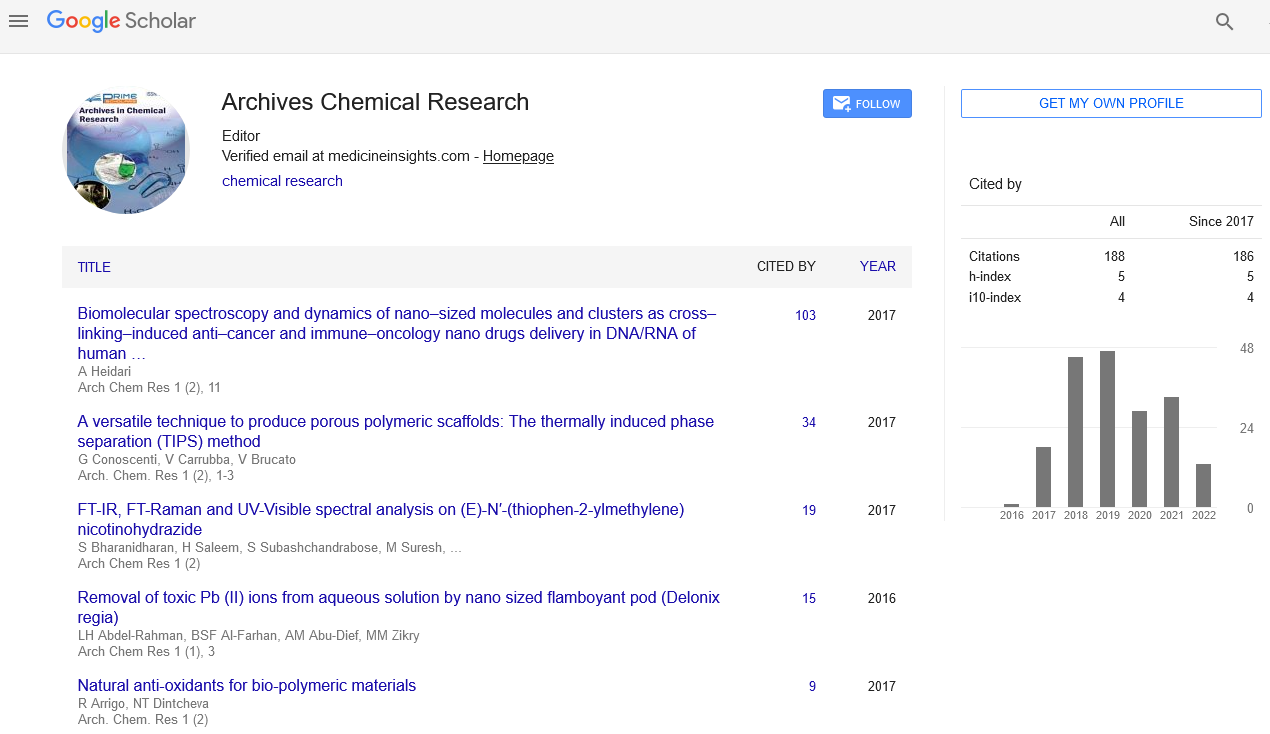Short Communication - (2024) Volume 8, Issue 4
Thermodynamics: The Science of Energy and Its Transformations
Takumi Inoue*
Department of Chemical, Kyoto University, Japan
*Correspondence:
Takumi Inoue,
Department of Chemical, Kyoto University,
Japan,
Email:
Received: 02-Dec-2024, Manuscript No. ipacrh-25-22503;
Editor assigned: 04-Dec-2024, Pre QC No. ipacrh-25-22503(PQ);
Reviewed: 18-Dec-2024, QC No. ipacrh-25-22503;
Revised: 23-Dec-2024, Manuscript No. ipacrh-25-22503(R);
Published:
30-Dec-2024, DOI: 10.35841/2572-4657.8.4.21
Introduction
Thermodynamics is a crucial component in the brain, playing
an essential role in maintaining the stability of microtubules,
which are part of the cytoskeleton of cells. These microtubules
serve as a transportation network within neurons, allowing for
the proper movement of nutrients, signals, and other essential
materials. While tau protein is vital for healthy brain function,
it becomes problematic when it is abnormally modified and
accumulates in the form of tangles.
Description
This article explores the functions of tau, its involvement
in neurological conditions, and current research efforts to
understand and target tau related diseases. It belongs to a
group of proteins called microtubule associated proteins which
help regulate the stability and dynamics of microtubules.
Thermodynamics are long, tube like structures that make
up part of the cell cytoskeleton and are responsible for
maintaining cell shape and facilitating intracellular transport.
Tau protein stabilizes these microtubules by binding to them
and promoting their assembly. Under normal conditions, tau is
primarily localized in the axons of neurons. The most notable
of these changes is hyperphosphorylation a process where
tau protein becomes excessively phosphorylated a chemical
modification that adds phosphate groups to the protein.
Tau related diseases are referred to as tauopathies and they
include a broad range of neurodegenerative disorders in which
tau plays a key role. Frontotemporal dementia is another
condition closely linked to tau. Neurodegenerative disease
associated with repeated head trauma, such as that seen in
contact sports. The exact mechanisms by which tau contributes
to neurodegeneration are not fully understood, but several
hypotheses have been proposed. Tau primary function is to
stabilize microtubules. Once tau becomes abnormally modified
and forms tangles, these aggregates are toxic to neurons.
Thermodynamics dysfunction is believed to contribute to
cognitive decline and memory loss, which are key symptoms
of tauopathies. One of the more recent areas of interest in tau
research is its ability to spread from one neuron to another. This
spread may help explain the progressive nature of tauopathies,
where symptoms worsen over time as more areas of the brain
become affected. In response to tau aggregation, the brain may
mount an inflammatory response involving microglia the brain
immune cells. Researchers are exploring several approaches
to mitigate tau pathology and prevent its damaging effects
on the brain. Several experimental drugs are being developed
to target tau aggregation. Some aim to prevent tau from
becoming hyperphosphorylated or forming tangles in the first
place. Others focus on enhancing the brain ability to clear tau
aggregates once they form. These antibodies can potentially
bind to tau aggregates and help the immune system clear
them from the brain. Similar to the approach used in some
disease therapies aimed at amyloid beta. Thermodynamics are
also exploring gene therapy techniques that could correct the
genetic mutations responsible for tauopathies or regulate tau
expression [1-4].
Conclusion
Advancements in imaging techniques, have enabled the
detection of tau aggregates in the living brain. Early detection
of tau pathology may allow for earlier intervention, before
extensive brain damage occurs. While progress has been made
in understanding tau role in neurodegenerative diseases,
much remains to be discovered. With continued investment in
tau related research, there is hope that new treatments will
emerge, offering better outcomes for individuals affected by
these debilitating disorders.
Acknowledgement
None.
Conflict Of Interest
None.
References
- Phillips OR, Joshi SH, Piras F (2016) The superficial white matter in Alzheimer's disease. Brain Mapp 37: 1321-1334.
[Crossref] [Google Scholar]
- Guo J, Li B (2018) The application of medical Artificial Intelligence technology in rural areas of developing countries. Health Equity 2:174-181.
[Crossref] [Google Scholar]
- Quinette P, Girard PB, Dayan J (2006) What does transient global amnesia really mean? Review of the literature and thorough study of 142 cases. Brain 129:1640.
[Crossref] [Google Scholar]
- Hussein HM (2021) Transient global amnesia as a possible first manifestation of COVID-19. Neurohospitalist 11: 84-86.
[Crossref] [Google Scholar]
Citation: Inoue T (2024) Thermodynamics: The Science of Energy and Its Transformations. Arch Chem Res. 8:21.
Copyright: © 2024 Inoue T. This is an open-access article distributed under the terms of the Creative Commons Attribution License, which permits unrestricted use, distribution, and reproduction in any medium, provided the original author and source are credited.

